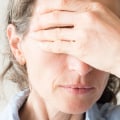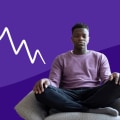During a depressive episode, the person experiences a depressed mood (sadness, irritability, emptiness) or loss of pleasure. Depression is one of the priority conditions covered by the Mental Health Gap Action Program (mHGAP) of. The program aims to help countries increase services for people with mental, neurological and substance use disorders through care provided by health workers who are not specialists in mental health. WHO has developed short manuals for psychological intervention for depression that can be delivered by lay workers to individuals and groups.
One example is the Problem Management Plus manual, which describes the use of behavioral activation, stress management, problem solving, treatment, and strengthening social support. In addition, the handbook Group Interpersonal Therapy for Depression describes the group treatment of depression. Finally, the Thinking Healthy manual covers the use of cognitive-behavioral therapy for perinatal depression. Action Programme on the Mental Health Gap (mHGAP).
Also visit the online treatment locator. What is the SAMHSA National Helpline? What are the opening hours? English and Spanish are available if you select the option to speak with a national representative. Do I need health insurance to receive this service? The referral service is free. If you are uninsured or underinsured, we will refer you to your state office, which is responsible for state-funded treatment programs.
In addition, we can often refer you to facilities that charge on a variable rate scale or that accept Medicare or Medicaid. If you have health insurance, we recommend that you contact your insurer for a list of participating providers and health care facilities. We will not ask you for any personal information. We may ask for your zip code or other relevant geographic information to track calls that are routed to other offices or to accurately identify local resources appropriate to your needs.
No, we don't provide advice. Trained information specialists answer calls, transfer callers to state services or other appropriate intake centers in their states, and connect them to local assistance and support. Alcohol and Drug Addiction Happens in the Best Families Describe how alcohol and drug addiction affects the whole family. Explains how substance abuse treatment works, how family interventions can be a first step to recovery, and how to help children in families affected by alcohol and drug abuse.
For additional resources, visit the SAMHSA store. Visit SAMHSA's Facebook page Visit SAMHSA on Twitter Visit SAMHSA's YouTube channel Visit SAMHSA on LinkedIn Visit SAMHSA on Instagram SAMHSA's mission is to reduce the impact of substance abuse and mental illness on communities in the United States. It is not uncommon for a person with an anxiety disorder to also suffer from depression or vice versa. Almost half of people diagnosed with depression are also diagnosed with anxiety disorder.
Generalized anxiety disorder (GAD) GAD affects 6.8 million adults, or 3.1% of the US. Population, but only 43.2% receive treatment. Women are twice as likely to be affected as men. GAD often occurs along with major depression.
Panic disorder (PD) PD affects 6 million adults, or 2.7% of the US. Specific phobias Specific phobias affect 19 million adults, or 8.7% of the US. UU. Symptoms usually begin in childhood; the average age of onset is 7 years.
Obsessive compulsive disorder (OCD) and post-traumatic stress disorder (PTSD) are closely linked to anxiety disorders, which some may experience at the same time, along with depression. Related Diseases Many people with an anxiety disorder also have a co-occurring disorder or physical illness, which can worsen their symptoms and make it difficult to recover. Treatment for both disorders is essential. Anxiety disorders affect 25.1% of children between 13 and 18 years old.
Research shows that children with anxiety disorders who do not receive treatment have a higher risk of performing poorly in school, missing important social experiences, and engaging in substance abuse. Older adults Anxiety is as common among older adults as it is among young people. Generalized anxiety disorder (GAD) is the most common anxiety disorder among older adults, although anxiety disorders in this population are often associated with traumatic events such as a fall or acute illness. Read the best way to treat anxiety disorders in older adults.
Depression is the leading cause of disability worldwide. Almost 75 per cent of people with mental disorders are not treated in developing countries and nearly 1 million people take their own lives each year. In addition, according to the World Health Organization (WHO), 1 in 13 suffer from anxiety worldwide. WHO reports that anxiety disorders are the most common mental disorders worldwide, with specific phobia, major depressive disorder and social phobia being the most common anxiety disorders.
The ADAA is not a direct service organization. The ADAA does not provide psychiatric, psychological or medical advice, diagnosis or treatment. Founded in 1979, ADAA is an international non-profit organization dedicated to the prevention, treatment and cure of anxiety, depression, OCD, PTSD and co-occurring disorders by aligning research, practice and education. National Health Interview Survey (NHIS) The NHIS collects data on children's mental health, mental disorders such as ADHD, autism spectrum disorder, depression and anxiety issues, and the use and need of mental health services.
Persistent depressive disorder, or PDD, (formerly called dysthymia) is a form of depression that usually continues for at least two years. A depressive episode can be classified as mild, moderate or severe depending on the number and severity of symptoms, as well as the impact on the individual's functioning. The following information is not intended to provide a medical diagnosis of major depression and cannot replace consultation with a mental health professional. In countries of all income levels, people suffering from depression are often not diagnosed correctly, and others who do not have the disorder are misdiagnosed and prescribed antidepressants too often.
Younger age groups saw greater increases in depression and anxiety than older age groups, and those aged 20 to 24 experienced the greatest peaks. Santomauro and Ferrari hope that governments and policymakers will consider the global increase in depression and anxiety in their policy-making and provide more treatment to those in need. Effective community approaches to preventing depression include school programs to improve a positive coping pattern in children and adolescents. That means tens of millions more cases of depression and anxiety, in addition to the hundreds of millions that are already happening around the world.
Rebecca finally quit smoking after receiving care for her depression and realizing she needed to take care of her own health. Interventions for parents of children with behavioral problems can reduce parents' depressive symptoms and improve outcomes for their children. They should not be used to treat depression in children and are not the first line of treatment in adolescents, among which they should be used with special caution. .
.


